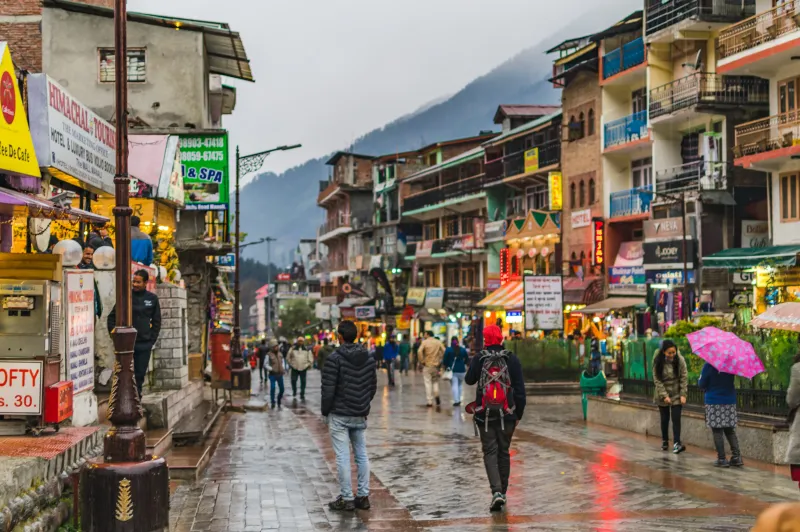
Manali is a hill station located in the Indian state of Himachal Pradesh. It is situated in the Beas River Valley, at an altitude of 2,050 m (6,726 ft) in the Pir Panjal Range of the Himalayas. Manali is one of the most popular tourist destinations in India.
The history of Manali is unclear. Some believe that the area was first settled by the nomadic Bhotiya people, who came down from the Himalayas in search of pastureland. Others believe that the first settlers were the Dravidians, who arrived from the south in search of a cooler climate.
The earliest recorded history of Manali dates back to the 6th century, when it was part of the kingdom of the Great King Ashoka. In the 12th century, the region was invaded by the Muslims, who established the Sultanate of Delhi. Manali was ruled by a succession of Muslim dynasties until the 18th century, when the Sikh ruler Ranjit Singh conquered the area.
After the death of Ranjit Singh in 1839, the British took control of the region and made it part of the province of Punjab. Manali was declared a hill station in 1895 and became a popular tourist destination for Europeans escaping the heat of the plains.
Following India's independence in 1947, Manali was merged into the state of Himachal Pradesh. In 1960, the town was devastated by an earthquake, but it was quickly rebuilt and has since become one of the most popular tourist destinations in the Himalayas.
READ MORE >> Top Tourist Attractions in Delhi Discover Famous Places Now
Some places to visit in Manali are the Rohtang Pass, the Beas River, the Hadimba Temple, and the Vashisht Baths.
The Rohtang Pass
The Rohtang Pass is a high mountain pass on the eastern Pir Panjal Range of the Himalayas around 51 km from Manali. It connects the Kullu Valley with the Lahaul and Spiti Valleys of Himachal Pradesh, India. The pass provides a natural divide between the climate of the arid high-altitude Lahaul and Spiti valleys and the more temperate Kullu Valley. It is situated at an altitude of 3,978 m (13,051 ft) and is one of the most treacherous passes in the world.
The Beas River
The Beas River is a river in the northern part of India. It is one of the five rivers of the Punjab region, and is one of the two rivers of the Himachal Pradesh state. The Beas River is also known as the Vipasha in the Vedas. The river rises in the Himalayas in central Himachal Pradesh, India, and flows for 470 kilometers through the states of Himachal Pradesh and Punjab to join the Sutlej River in the state of Punjab, India.
The Hadimba Temple
The Hadimba Temple is a Hindu temple located in Manali, Himachal Pradesh, India. The temple is built in the traditional Himalayan style and is dedicated to Hadimba Devi, the wife of Bhima of the epic Mahabharata. The temple was built in 1553 by Maharaja Bahadur Singh and is a four-tiered structure with a pyramidal roof. The temple has a 15 m (49 ft) high wooden doorway, which is intricately carved with images of gods and goddesses. The temple is surrounded by a cedar forest and is a popular tourist destination.
The Vashisht Baths.
The Vashisht Baths are a group of natural hot springs in the village of Vashisht, located in the Manali district of Himachal Pradesh, India. The springs are situated at an altitude of 2,500 metres (8,200 ft) and are surrounded by snow-capped mountains. The water in the springs is said to have therapeutic properties and is believed to be beneficial for skin diseases and joint pains.








Showing 0 verified guest comments